Tag: Junk DNA
Does Intelligent Design Help Science Generate New Knowledge?
I was recently asked by an evolutionary biologist where ID can help science generate “new knowledge.” It’s important to realize that when dealing with historical sciences like neo-Darwinian evolution or intelligent design, new knowledge takes the form of both practical insights into the workings of biology in the present day (which can lead to insights into fighting disease), as well as taking the form of new knowledge about biological history and the origin of natural structures. In this regard, I could not disagree more with suggestions that ID closes off inquiry and does not lead to new scientific knowledge. Below are about a dozen or so examples of areas where ID is helping science to generate new knowledge. Each example Read More ›
The Human Genome Project Ten Years Later
Scientific American recently reported on what has transpired since the completion of the Human Genome Project ten years ago. When the HGP was first announced in 2000, many scientists said that it would be the key to understanding disease and for developing cures. Ten years later, however, this has not been the case. The human genome project has aided in developing better research and technology, particularly in our abilities to sequence genes. It has also shown us that much of what we once considered junk DNA isn’t really junk at all. (See here, here, here, and here for past ENV discussions on junk DNA). However, scientists are coming to a sobering conclusion that perhaps their models and assumptions on the Read More ›
Francis Collins, Evolution and “Darwin of the Gaps”
Francis Collins is one of the world’s most prominent theistic evolutionists, and now a prominent piece of President Obama’s government. In this clip, God and Evolution contributors and other scholars respond to Francis Collins’ defense of theistic evolution in his book The Language of God. In his book The Language of God: A Scientist Presents Evidence for Belief (2006) and other writings and interviews, Collins has described the paths that led him from atheism to religious belief and from an impatience with “messy” biology and a preference for the pristine realms of physics and chemistry to a fascination with DNA, RNA, and “gene-hunting.” Much of Collins’s case for Darwinian evolution is based on so-called “junk DNA.” This is the part Read More ›
Yet More “Junk DNA” Not-so-Junk After All
Proponents of intelligent design (ID) have long predicted that many of the features of living systems which are said to exhibit “sub-optimal” design will, in time, turn out to have a rationally engineered purpose. This is one of several areas where ID actively encourages a fruitful research agenda, in a manner in which neo-Darwinian evolution does not. One such area, and a field for which I have long held an inquisitive fascination for, is the subject of so-called “junk DNA,” and the non-coding stetches of RNA which are transcribed from them. Skepticism of the “junk DNA” paradigm is not a phenomenon which is limited to proponents of ID. This popular view of the genome — while still resonating as the Read More ›
MicroRNAs–“Once Dismissed as Junk”–Confirmed To Have Important Gene Regulatory Function
A new paper in Nature magazine again shows that what was “once dismissed as junk” turns out to be another astounding example of complex and specified information in the genome and a crucial part of gene regulation. In 2008 Scientific American noted that microRNAs were “once dismissed as junk” and said the following: Tiny snippets of the genome known as microRNA were long thought to be genomic refuse because they were transcribed from so-called “junk DNA,” sections of the genome that do not carry information for making proteins responsible for various cellular functions. Evidence has been building since 1993, however, that microRNA is anything but genetic bric-a-brac. Quite the contrary, scientists say that it actually plays a crucial role in Read More ›


